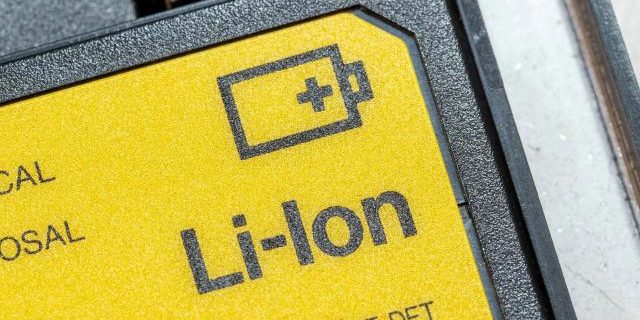The researchers describe the internal chemistry as forming an ion
Pioneers on the front line of battery research are already looking for the next frontier «beyond» lithium-ion science. And a special additive could be the secret to unlocking the promising tech, according to experts at Argonne National Laboratory.
The plan — using some fitting transportation-related nomenclature — is to improve shuttling by creating a highway.
The team is studying lithium-sulfur, or Li-S, batteries with a lithium metal anode and a sulfur cathode. The pairing has the potential to store more electricity per pound. The pack also uses less-expensive materials that are not as dependent on foreign supplies, according to a news release from Argonne.
The lab team believes the «batteries can achieve higher energy density and better overall performance,» chemist Guiliang Xu said in the summary.
But there are some considerable hurdles to overcome first. The packs have short life cycles «due to the unwanted migration of polysulfide ions and the uneven distribution and occurrence of chemical reactions within the system,» per Argonne’s report.
Unlike other batteries, Li-S packs cycle thanks to chemical reactions that convert sulfur into polysulfide compounds. The trick is to make sure the compounds go where intended. Some of the polysulfide «material» from the cathode is deposited on the anode as it shuttles between them, limiting effectiveness, the summary continued.
That’s where the additive, which causes a closely controlled reaction, comes into play. It forms a film over both electrodes.
»The key is to have a minor reaction to form the film, without a continuous reaction that consumes the material,» Xu said in the report.
The researchers describe the internal chemistry, including an improved electrolyte, as forming an ion «highway» that fosters ion movement.
Experts elsewhere are also experimenting with sulfur chemistry. In Australia, a team is working on a pack that promises to shorten charge times. Scientists in Argentina are strangely using cow hair in battery cells.
All of the breakthroughs are contributing to the electrification of our transportation and energy systems. The transition is important as we work to limit heat-trapping air pollution, which the World Meteorological Organization reported is part of a «vicious circle» that includes wildfire risks.
You can help by cutting back on the amount of time you drive your gas-burning ride. Getting an electric bike is a great way to cut fuel costs, reduce pollution, and get some exercise. Depending on where you live, tax incentives may even help to pay for the two-wheeler.
And before too long, e-bikes may be powered by lithium-sulfur batteries made more efficient by ions that travel on a «highway» developed at Argonne.
The additive is testing well. Next, Xu’s team intends to study other parts of the pack that could use some shoring up, helping to stabilize operations, improve safety, and contribute to «their commercial adoption.»








